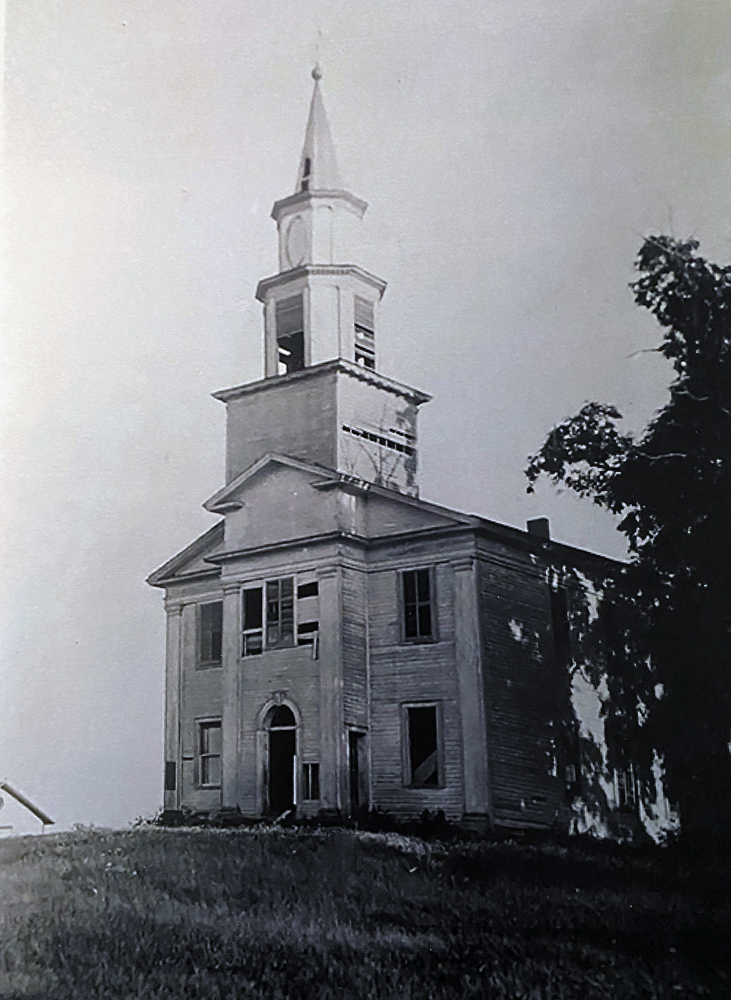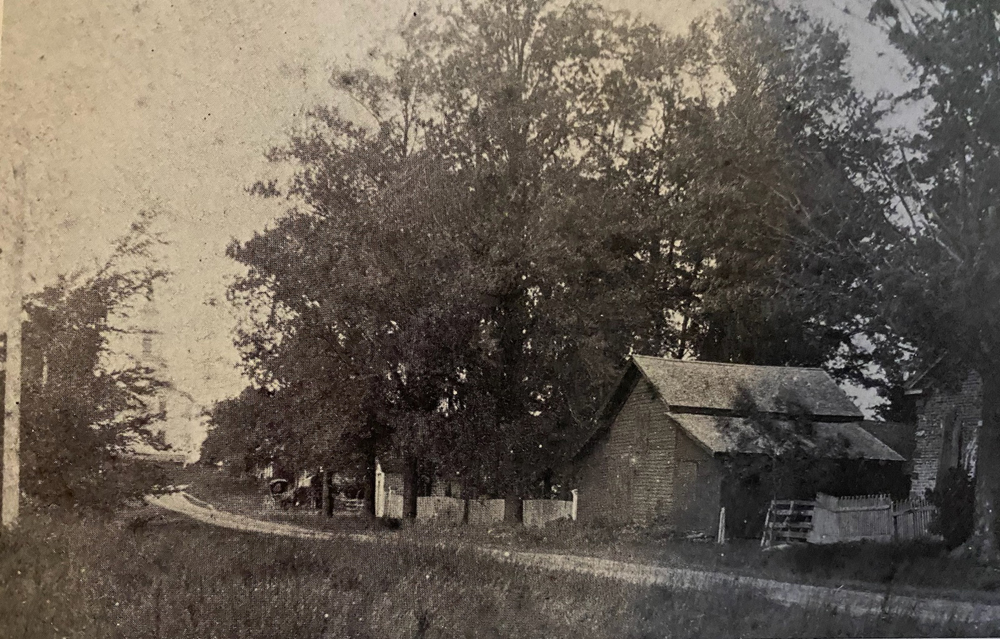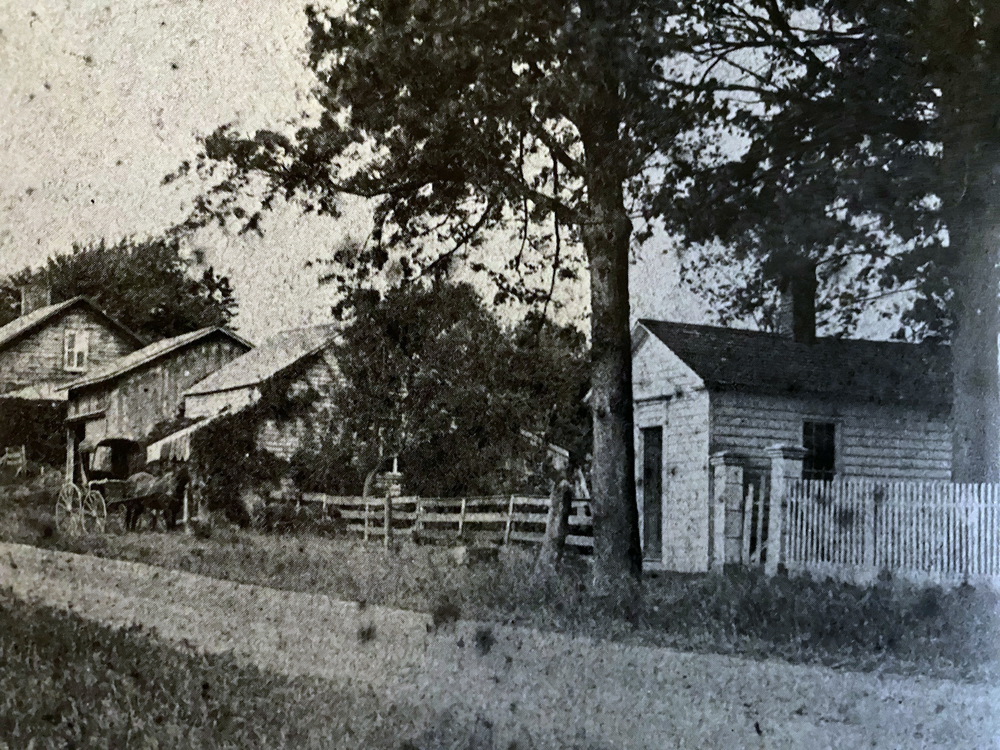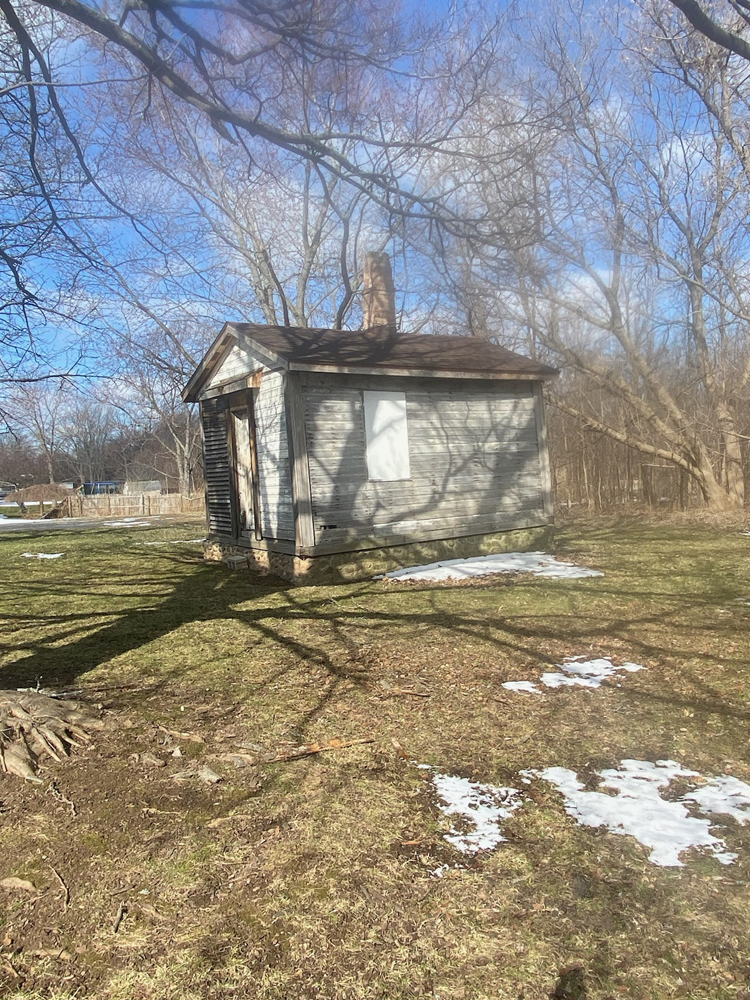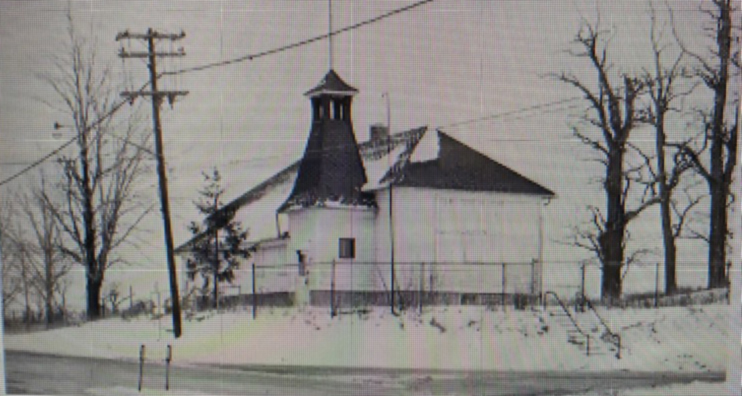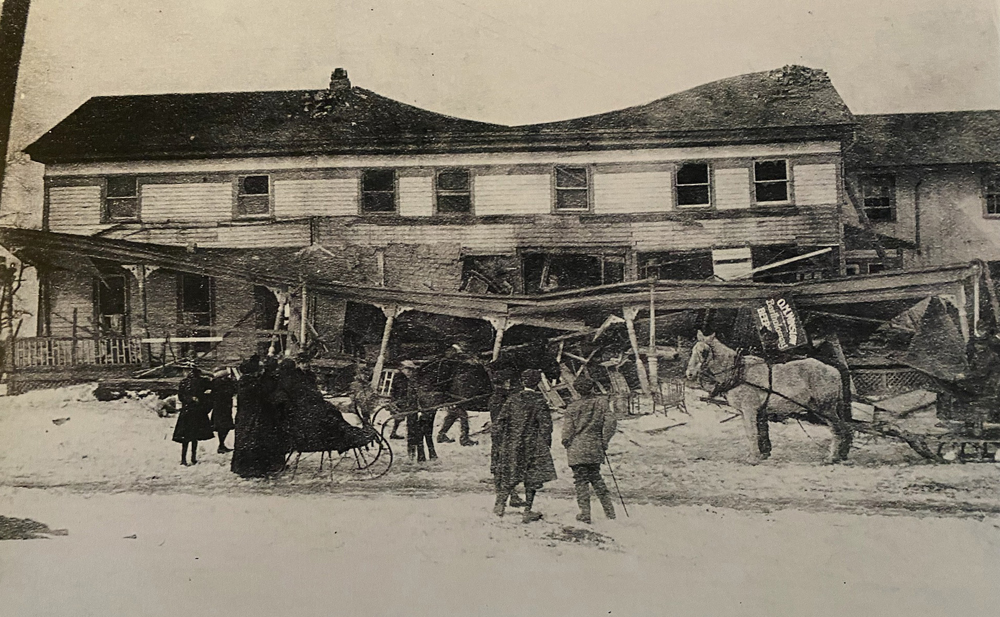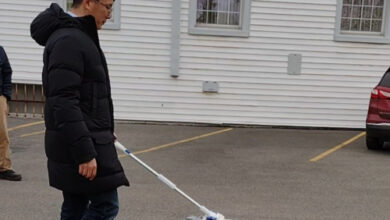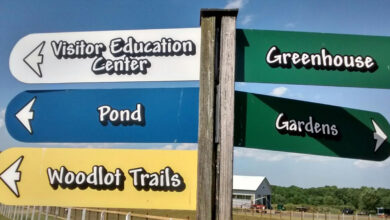History of West Greece (Hoosick Hill)
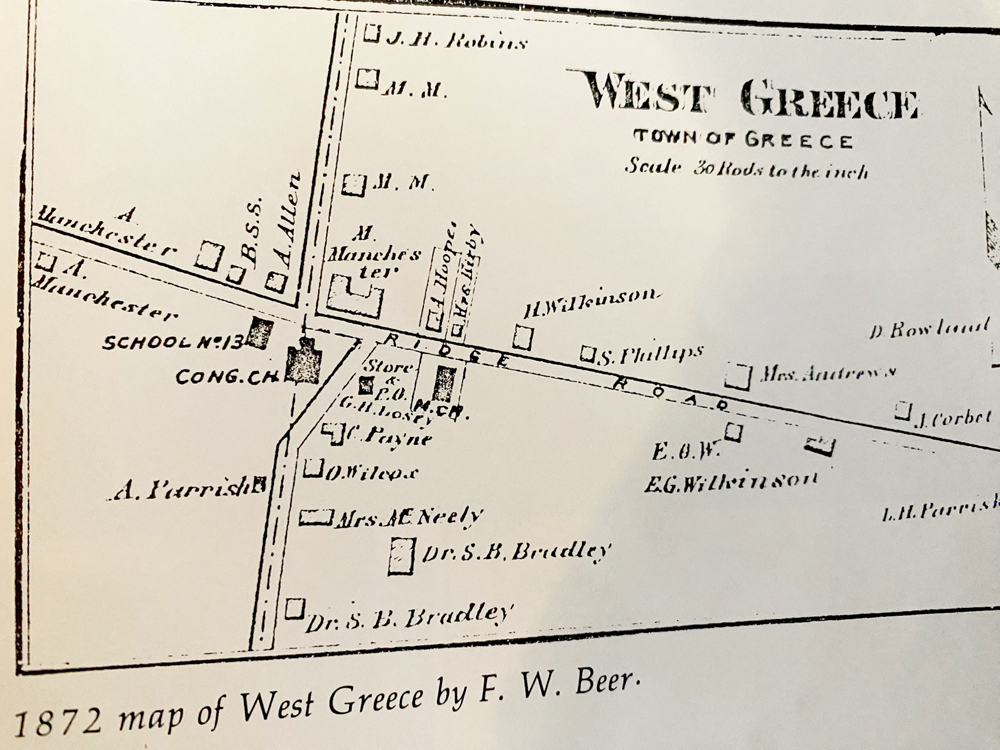
by David Crumb, Parma-Hilton Historian
At the intersection of Manitou Road and Ridge Road West stands an early Parma cemetery high on a hill. Known as Hoosic Hill Cemetery, this old burial ground has graves of early pioneers dating back to the very early 1800s. Today the cemetery is all that remains of the old community built around the above intersection, then known on old maps as West Greece, New York, even though half of the community on the west side was in the town of Parma.
Each of the four corners had homes, barns, and public buildings in a tightly arranged typical small town setting. Of significant importance is that Manitou Road, before 1880, was called the Parma Greece Townline Road. In the prosperous 1880s and 90s, resort operations were developing along the Lake Ontario shoreline. On the west side of Braddock Bay, a resort was being developed by people by the name of Skinner, Odenbach, McLaughlin, and Weidman. When it came time to name this resort beach, the authorities chose Manitou because of the name. Manitou was a Native American deity from out west, and that name seemed appropriate for the era.
Another interesting fact about this intersection is that Manitou Road did not always go in a straight line at the intersection. Hoosic Hill in the old days was much larger and extended east into what is now West Herr’s parking lot. To go south on Manitou, a driver heading south had to make a little jog to the left before proceeding down the much narrower road of the 1800s. On top of this much larger Hoosic Hill stood Parma’s first traditional church building. It was built as a Congregational church in 1824 by the early residents of West Greece and Parma Corners. This impressive piece of colonial-style architecture stood high on the hill straddling the Greece-Parma boundary line and casting a long shadow down north Manitou Road. Driving up Manitou Road from the north, the church with its high steeple must have been an awesome sight. The cemetery to the west of the church is the resting place of the early parishioners. The cemetery includes many of the early residents and first settlers of both Greece and Parma. Included also are several Revolutionary War veterans: Asa Beebe 1764-1854; Kitchell Reed 1754-1842; Ephraim Day 1740-1825; and Benjamin Barrett 1760-1831. There are also two French and Indian War Veterans interred there. These veterans are remembered each Memorial Day with flags placed on the graves by the V.F.W.
In the early 1900s, with the advance of transportation and the automobile, town officials agreed to remove the old Congregational church, which had been abandoned due to declining membership. The old building was empty and left to the wind and weather. Once the church was gone, excavators moved in and took out a good chunk of Hoosic Hill so that Manitou Road could go in a straight line as it does today. At a later date, and as traffic increased, a stop light was installed over the intersection. Today most of the old buildings of West Greece have burned, deteriorated, or been demolished. Fortunately, old photographs have survived of the area so that those who are curious can catch a glimpse of what the historic community once looked like.
On the southwest corner extending into West Herr’s parking lot due to the jog in the road were a line of small homes and businesses, Boylins’ general store, the West Greece Post Office, and later fronting Ridge Road, the Concord Lutheran Church along with its parsonage. Of special importance, however, was the physician’s office and home of Dr. Samuel Beach Bradley, one of Parma and Greece’s most distinguished citizens. Dr. Bradley arrived in West Greece in 1823. For a few years after that, during his 20s, he moved around the country, gaining an impressive education. It was said he knew eight languages and could converse in four. He was also a noted botanist with 11 species credited to his research. Around 1830 he came back to West Greece, where he settled permanently. His old home was on the Greece side of south Manitou. It burned in 1974. His old doctor’s office, however, has survived and is now located behind the historic Parma Meeting House on Parma Center Road. This was thanks to the efforts of former Parma Historian Shirley Cox Husted, Don Cox, and the involvement and help of history students from Roberts Wesleyan College. Further restoration is still needed, but the small building has been preserved.
Dr. Bradley kept a diary that his descendants also preserved. In the 1970s, Grace Goodell Witty, a charter member of the Parma Hilton Historical Society, painstakingly transcribed the entire collection by hand with no aid of a computer. Whenever Dr. Bradley mounted his horse to ride off to care for a patient, his neighbor Martha Maneely hollered out her kitchen window, “who sick, who sick,” giving rise to the name Hoosick Hill. As much as people like to subscribe to this lore, it turns out through research that a few of the early settlers came from Hoosick, New York, east of Albany.
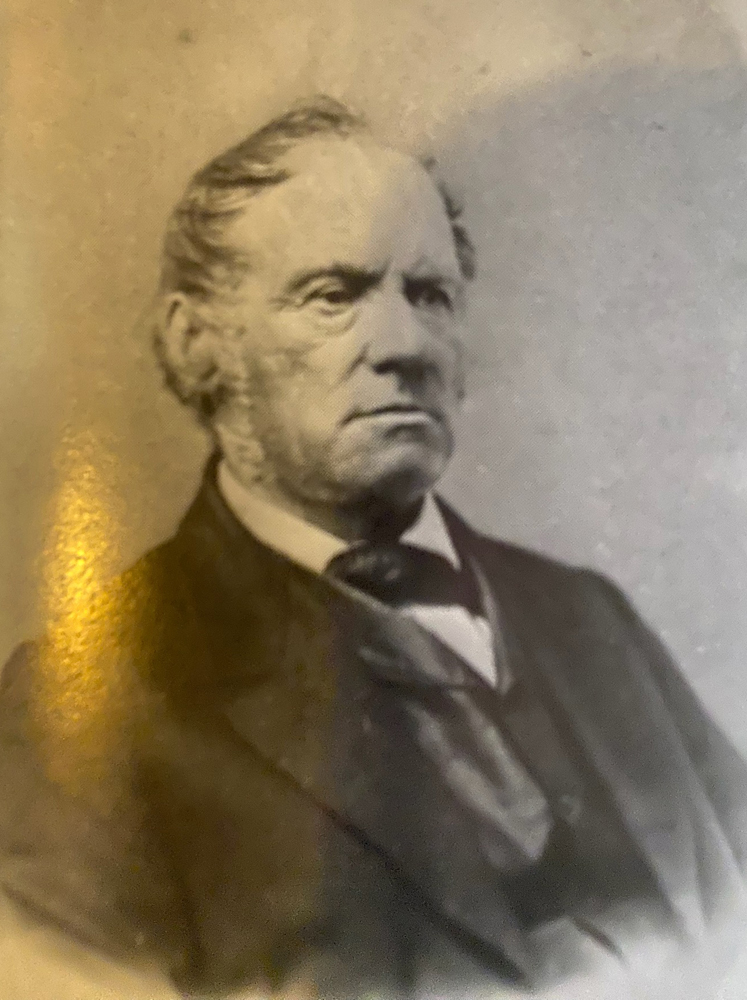
On the northeast corner where West Herr has a used car lot, there once stood an old stagecoach stop called the Manchester House and later the Winslow Hotel. It was built in the popular Greek Revival-style architecture and catered to travelers heading east and west on Ridge Rd over the years. It met an untimely fate in 1914 when just before a sleighing party was scheduled to arrive, the place blew up due to an acetylene gas explosion. Fortunately, photos of this event were captured. One photo, in particular, shows the arriving sleighs and their occupants. If they had arrived 20 minutes earlier, they would have been part of the disaster.
Further east on the Ridge, but still a part of the West Greece community, was Streb’s Steak House restaurant. Many readers will remember this favorite old standby located in a historic old inn. It had a reputation for good food at reasonable prices. But in the early 2000s, it closed and was later acquired by a car dealership and demolished to make room for more cars.
The first cobblestone house west of the Genesee River on Ridge Road is a bit further east on the north side, set back from the road. For many years this interesting old house was known as the “Cat Nap,” a place to take your cat for a vacation while its owner took theirs. It has been shuttered and abandoned for a number of years and decorated with graffiti. Hopefully, in time, it will be repurposed with a new use and subsequently be preserved for its architectural and historical value. On the south side of Ridge is Stutzman’s Guitar Center. It is a federal-style architectural building that once served as an early home but is now a commercial landmark still in productive use.
On the north side heading west of the intersection on the Parma side is the Friendly Motel, the offices housed in an early brick building that was also once a house. In the 1940s and 50s, there were several of these motel operations in the area, including Kirby’s, which was one of the first to boast a swimming pool.
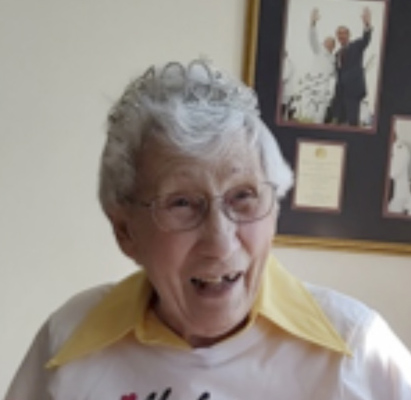
Parma’s District No. 13 schoolhouse was located just in front of the Hoosick cemetery on Ridge Road. After the decentralization of rural schools, the building was moved west and then north on Dean Road and converted into a home. An interview with Pearl Neumann, a spritely centenarian who attended the school for eight years, brought to life some of the memories of the school in the early 1930s. Pearl remembered her teachers, Mrs. Mahally and Mrs. Vaness. She also reminisced about wild times during Halloween when the older boys disassembled a buggy and then moved it to the school’s roof, and reassembled the wheels. There it was, straddling the roof’s peak the next morning when the kids arrived at school, to everyone’s amazement. That tale has been etched into the lore of both Parma Corners and West Greece. Even 90-year-old Bob Tice recalled the event when I spoke with him at his home in Virginia.
About halfway between West Greece and Parma Corners, sitting high on a hill, is the old Lankton homestead. It was once a sizeable farm operation. Now the house and grounds are enjoyed by the Lopassio family. The house retains much of its early form, including a cupola on the roof. Another stone house on the south side is the old Peter home, which is set back from the road. It was built in the 1940s out of Medina sandstone. That family had one of the first swimming pools in the area in the 1950s. The family was generous during the summer months and let local schools host swimming lessons for younger students.
Information and photos for this article came from the Parma Hilton Historian’s office. Also, Eight Miles Along the Shore by Tomkiewicz and Husted and Parma Hub of the Universe by Shirley Cox Husted.
